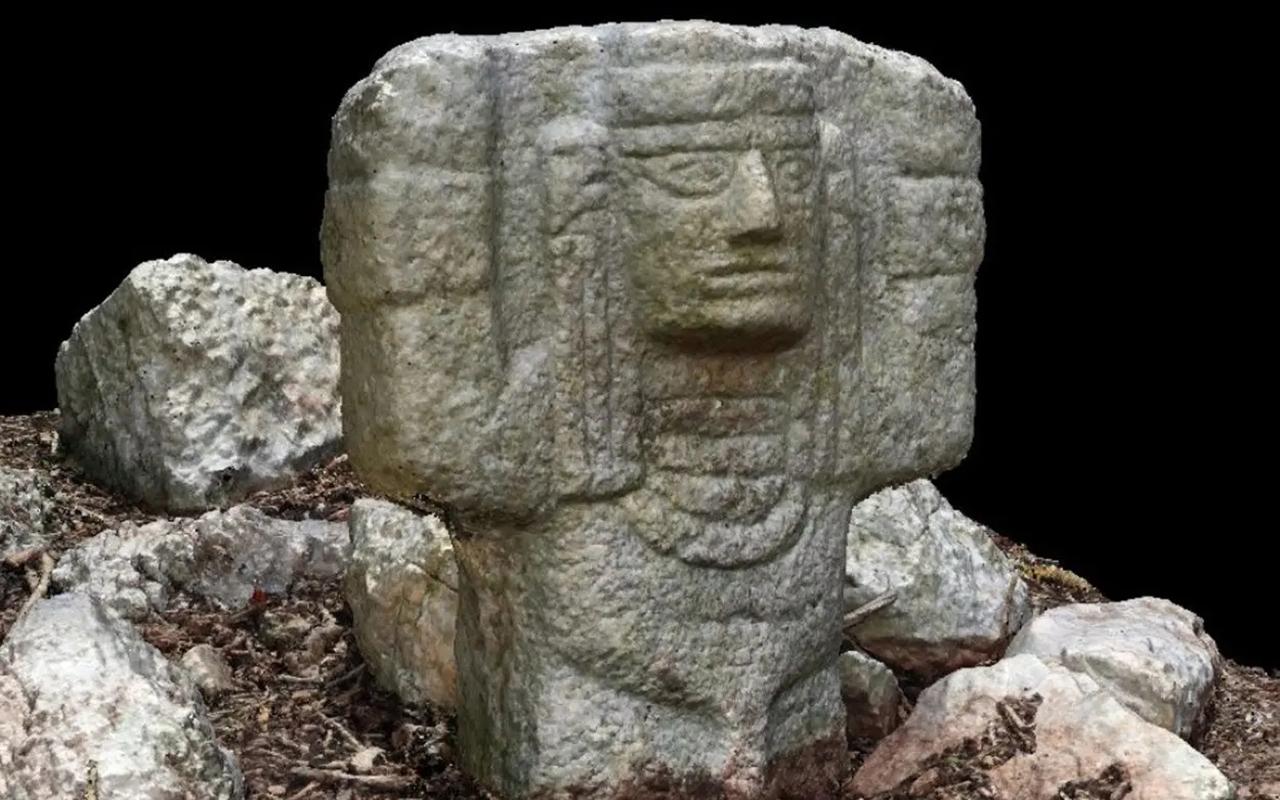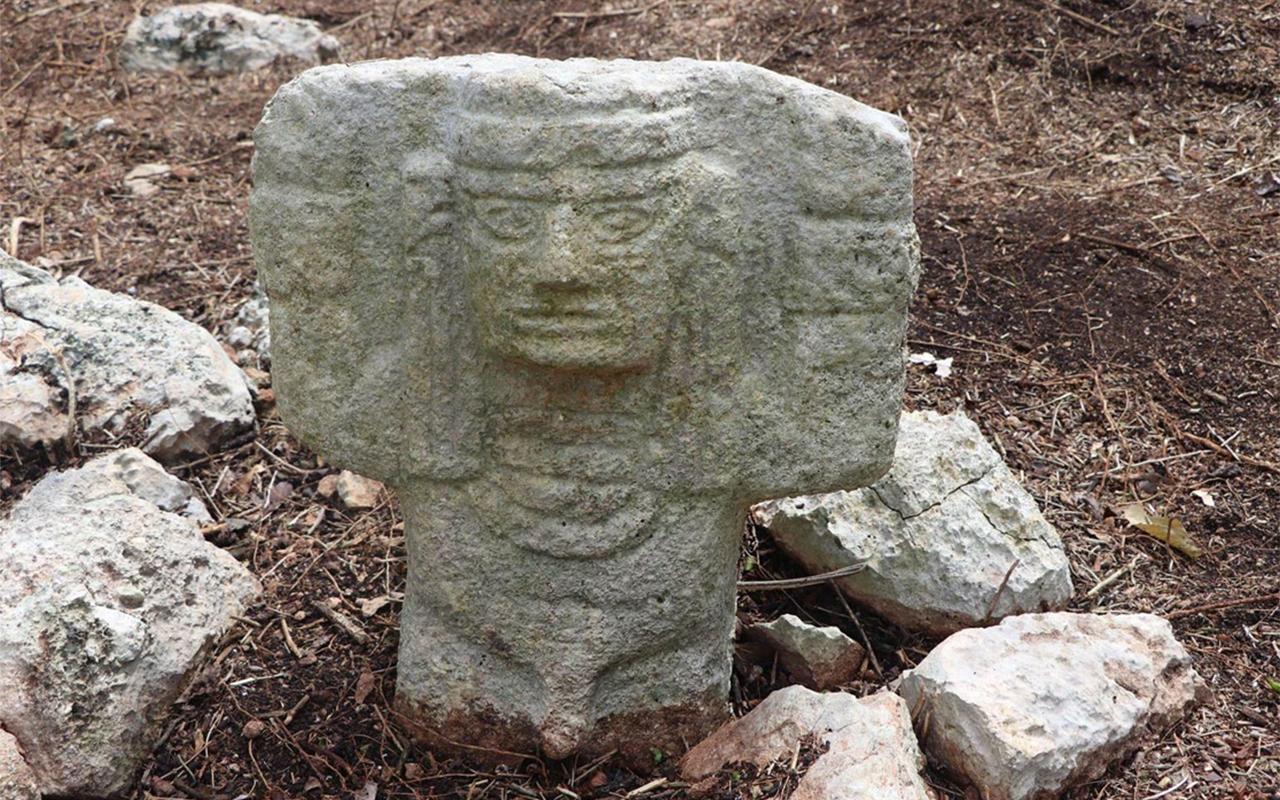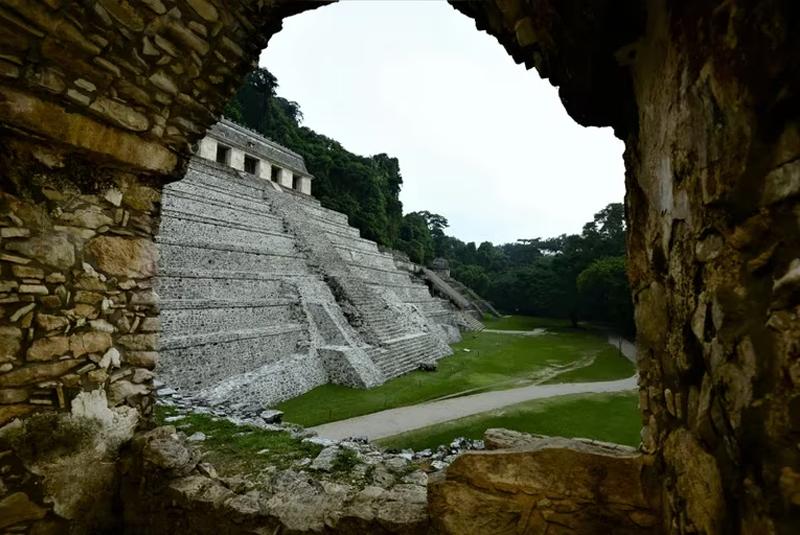Atlantean sculpture discovered at Chichen Itza
Archaeologists from the National Institute of Anthropology and History (INAH) have discovered an Atlantean-type sculpture, during their road prospecting efforts for the new Chichén Itzá route in Mexico’s Yucatan Peninsula.
 Atlantean sculpture was found during construction of the path to the new section of Chichén Itzá. Credit: INAH
Atlantean sculpture was found during construction of the path to the new section of Chichén Itzá. Credit: INAH
Atlantean sculptures, known for their anthropomorphic appearance, are stone statues of humanoid figures typically serving an architectural function as support columns or pillars. The name “Atlantean” is derived from Atlas, a Titan from Greek mythology condemned to bear the weight of the sky for eternity. Similarly, these statues are often depicted as bearing the weight of the structures they support, echoing the role of Atlas.
These sculptures have previously been unearthed at Chichén Itzá, particularly at the Temple of Warriors. However, this latest find is distinct in that it was discovered in an area known as Chichén Viejo, marking the first such discovery in this part of the site.
The sculpture stands at an impressive 90 centimeters (3 feet) in height and depicts a with both arms raised, holding an object. What sets this sculpture apart is its intricate attire, which includes a headband, a pectoral plate made of four rows of presumed jade beads, elongated earmuffs, and bracelets. The facial features of this figure also bear a remarkable resemblance to Huastec influences, suggesting a shared cultural connection.
 Credit: INAH
Credit: INAH
Diego Prieto Hernández, the general director of INAH, unveiled this remarkable discovery during a press conference alongside President Andrés Manuel López Obrador. He emphasized the significance of this finding and how it hints at a cultural synergy between the Maya culture of Chichén Itzá and the regions of central and northwestern Mexico during the Terminal Classic and Early Postclassic periods, roughly between CE 800 and 1200.
RelatedStories

Lost 18-kilometer Maya road revealed using LiDAR technology
DECEMBER 4, 2023
Archaeologists uncover ancient ‘cult’ circular structure in Mexico jungle
NOVEMBER 2, 2023
In the broader context of Mesoamerica, particularly during the Postclassic period (circa CE 900–1500), atlantes became a distinctive architectural feature in various regions. One of the most famous examples can be found in the ancient city of Tula, the capital of the Toltec Empire, known for its colossal basalt figures atop the Temple of Tlahuizcalpantecuhtli (Temple of the Morning Star). These figures, standing over 4 meters tall, once supported the temple’s roof.
The unveiling of Chichén Viejo, the luxury residential complex connected to Chichén Itzá’s controlling elites, is scheduled for September 2, 2023, as announced by Mexico’s Ministry of Culture through INAH.
 The location where the sculpture was found. Credit: INAH
The location where the sculpture was found. Credit: INAH
Chichén Itzá, a renowned UNESCO World Heritage Site, stands as one of Mexico’s most popular archaeological destinations. This ancient Maya city, once inhabited by approximately 35,000 people at its zenith, boasts iconic structures such as the Kukulkan Pyramid, the Temple of the Warriors, and the Ball Court.
Related Post
A shocking documentary proves that mermaids do exist
SHOCKING Revelation: Thuya, Mother of Queen Tiye, Was the Grandmother of Akhenaten and Tutankhamun—What Ancient Egyptian Secrets Did She Leave Behind?
Breaking News: Astonishing Discoveries at Karahan Tepe Confirm an Extraterrestrial Civilization is Hiding on Earth, and NO ONE Knows!
Breaking News: Researchers FINALLY Discover U.S. Navy Flight 19 After 75 Years Lost in the Bermuda Triangle!
NASA’s Secret Investigation: Uncovering the Astonishing Mystery of the UFO Crash on the Mountain!
Explosive UFO Docs LEAKED: Startling Proof That Aliens Ruled Ancient Egypt!